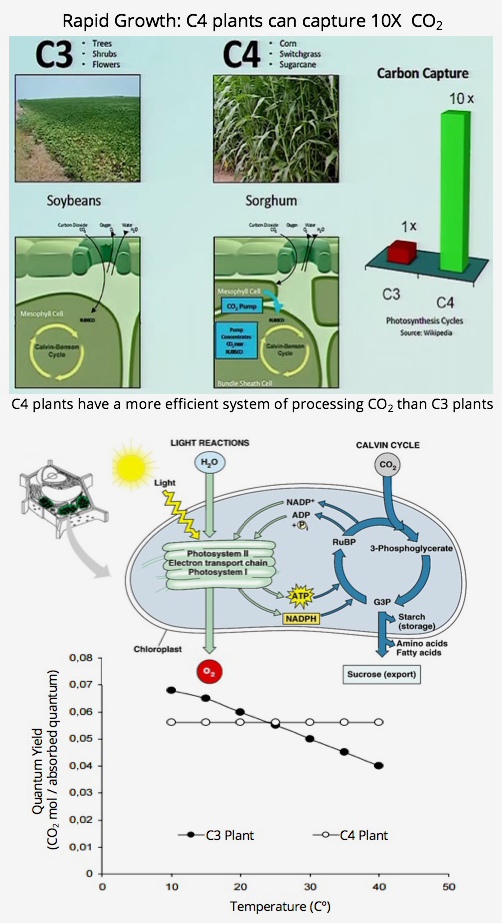Energy Crops – Biomass Generation
Photosynthesis
Photosynthesis in C3 plants (such as trees) and C4 plants (such as Energy Cane and Sugarcane) involves the conversion of radiant energy from the sun into chemical energy in the form of glucose and other sugars.

The initial process in photosynthesis involves the decomposition of water (H2O) into oxygen, which is released, and hydrogen. This process requires direct light.
The carbon and oxygen from carbon dioxide (CO2) and hydrogen are then converted into a series of increasingly complex compounds, ultimately resulting in a stable organic compound, glucose (C6H12O6), and water. This phase of photosynthesis utilizes stored energy and can therefore proceed in the dark.
There are three main types of photosynthesis: C3, C4, and CAM. C3 photosynthesis is the most common type and is found in woody, round-leafed plants, which account for approximately 95% of all plant species. In contrast, C4 and CAM photosynthesis are more efficient in terms of water and energy use. C4 plants have a distinct advantage when it comes to photosynthesis under high heat and light conditions, outperforming C3 plants in these environments.
C4 photosynthesis provides a competitive advantage in environments with high temperatures and intense sunlight. This type of photosynthesis enables plants to thrive in conditions that would be challenging for C3 plants. Notably, C4 plants possess more competitive advantages in high temperature and light conditions than C3 plants. Additionally, C4 plants utilize water more efficiently.
In the context of climate change, where rising CO2 levels in the atmosphere are associated with an average temperature increase and water scarcity, C4 type plants have been found to be more adaptable to these new climate conditions.

